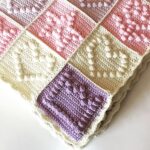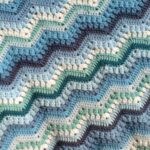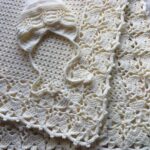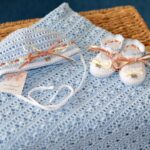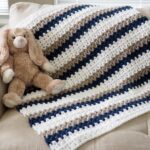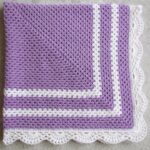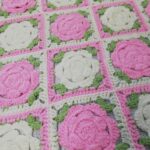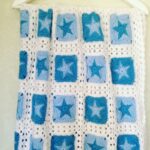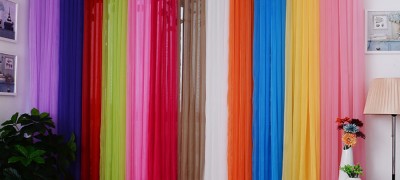Crochet baby blanket
Plaid is an element of the interior, surprising in its functionality. A children's blanket is capable of combining a lot of necessary features: it is used to cover a child during an afternoon nap, it is used to cover a baby in a stroller during outdoor walks, and over time, the blanket is used as a play mat. And this is not a complete list of the possibilities of a rectangle knitted with your own hands! How to choose the right crochet hook and yarn? How to crochet a blanket?
Perfect tandem: crochet hook and yarn
The quality of a product largely depends on the material from which it is created, as well as on the quality and convenience of the tools that the master uses in the process of creating his masterpiece.
In fairness, it should be noted that today there is no shortage, neither in the range of tools, nor in the amount of yarn on offer.

Fans of hand-made crochet have a huge selection of patterns and patterns, as well as an impressive set of descriptions of all kinds of techniques: from grandmother's square to Tunisian knitting and African motifs. It is worth noting that you can use any technique, diagrams and drawings to create a blanket. Moreover, step-by-step descriptions for novice needlewomen are available today.

In order to form the perfect pair: "hook + yarn", it is important to pay attention to the following criteria:
- The density of your knitting. If you get a very loose fabric, then take a thinner hook, but if, on the contrary, the knitting is very tight, the tool should be thicker.
- The size of the tool directly depends on the selected yarn. As a rule, each skein is marked with the recommended needle and hook number.
- Much depends on the pattern. If an openwork canvas is planned, then the tool may be thicker. If the blanket needs to be tight, a smaller hook will do.
Important: not only the appearance of the finished product depends on the correct selection of the tool and material, but also its "behavior" during operation. After all, if the woolen cloth is tied too tightly, it can eventually fumble and become unusable. And too loose knitting will lead to the subsequent deformation of the blanket.
Yarn composition
The yarn can be either natural (cotton, wool) or synthetic (acrylic).
Cotton
An excellent choice for crocheting a baby blanket. Hypoallergenic, breathable, ability not to accumulate static electricity. Such products do not require special care: they are machine washed on a delicate cycle, with the addition of a regular product. Even after many washes, they do not lose their original color, they dry quickly.

Speaking about the shortcomings (and what about without them ?!), it is necessary to note the large weight of the products. In addition, blankets made of natural cotton can be somewhat harsh to the touch, and a child in such an accessory will not be very comfortable. However, if you use mercerized cotton, or a thread with the addition of bamboo (silk), then these problems can be solved.
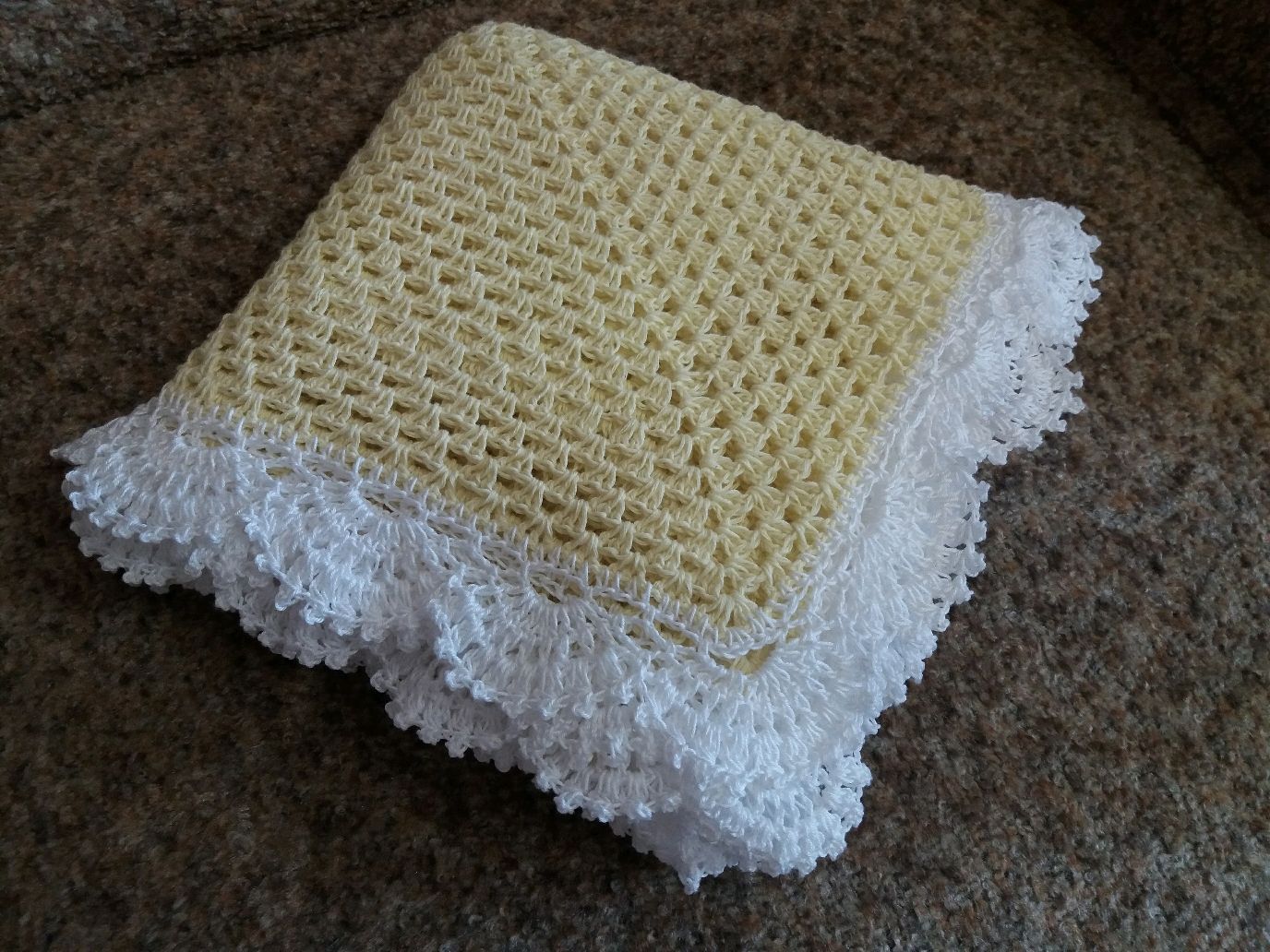
When choosing cotton, pay attention to the uniformity of the thread, it should be even, without knots or bulges. The twist should be tight enough so that the thread does not delaminate during operation. Then, as a result, the product will look neat. An openwork blanket will require more yarn, so take with a margin. Remember that threads of the same color from different batches may differ slightly, therefore, in order to avoid such troubles, purchase a little more yarn.

Finally, avoid patterns that are too airy for the plaid. Lace is beautiful when it is in place. Choose your hook according to the instructions and recommendations on the label.
Wool
Sheep, camel, goat wool, in addition to thermal insulation properties, also has healing properties. But even without a "fly in the ointment" is not enough, often natural woolen thread causes allergies and "bites". May lead to irritation.
Clothes made of natural wool can only be washed by hand and dried for a long time. Due to improper drying, the blanket (and any other thing) can deform. With prolonged use, the yarn falls off, pellets appear on the surface. It is due to the above features that natural wool is not recommended for knitting children's blankets. Better to use semi-wool.

It is ideal if natural fibers are also used as an additive: silk or linen. Thanks to additives, the product becomes more durable and elastic. In addition, additional fibers make the blanket lighter, bulkier and warmer, suitable for the harshest times of the year.
Important: for children's products, it is not recommended to use yarn with a long pile, or very fluffy. Fibers will crawl into your baby's mouth, eyes and nose, causing discomfort.

Before you start knitting (or better, before buying), check the yarn: pull the thread, it should be uniform, the fibers should not diverge. The yarn may shrink. Be sure to "listen" to your tactile sensations. Apply the thread to your cheek or neck, if there is even a slight discomfort - refuse the purchase.
Acrylic
Outwardly, the yarn is very similar to wool, but does not prick at all. In terms of strength, acrylic is much superior to natural wool, so products made from it are much more wear-resistant than from natural fibers. Synthetic fiber is ideal for dyeing, so acrylic is always available in a huge range of colors. The threads do not fade in the sun, and do not lose their original brightness even after many washes. That is why multi-colored acrylic bedspreads are so effective.

Although acrylic warms up like wool, unlike natural fibers, it accumulates static electricity and does not allow moisture to pass through. Over time, acrylic products may stretch a little. If the threads are of poor quality, then the yarn will creak during the knitting process.

Today, a special synthetic yarn is produced with the mark "baby" - this is the best choice for children under the age of one year.
Important: Be sure to tie the pattern before you start creating the bedspread. It is best if the sample is not too small.
Then do WTO (wet heat treatment) to understand how the yarn will behave in action. And only after that you can start calculating the required number of loops.
How to determine the size
When you knit a product yourself, we are not talking about the standards established by GOST.Generally speaking, you can knit a blanket of any size and volume. If you simply have no idea what parameters such a product should have, here are some approximate sizes:
- Plaid in a stroller for the smallest 80x100 cm.
- In the crib for a newborn 80x120 cm.
- For discharge from the hospital: 90x90 cm, 100x120 cm, but most often they knit a blanket measuring 80x100 cm.
- Warm blanket for walking with a baby in late autumn and winter 90x120 cm.
- For a child aged 3-5 years 100x140 cm.

Choosing a drawing
Knitted blankets look original and are very practical to use. The choice of thread is largely determined by the pattern chosen. So, for example, the most ordinary double crochets look completely faceless if the thread is monochromatic, and very impressive if the thread is sectional dyed or melange.
Square fragments
In general, products made from fragments (it does not matter, round or square) are beautiful, simple in execution, and do not require perfectly correct calculations - in the process there is always an opportunity to correct something. The indisputable advantage of such models is that you can knit them anywhere (on public transport, on vacation, etc.), and small elements do not interfere with anyone.
First, one piece is knitted. Then it is steamed (if necessary), and after that you can estimate how many fragments you need to make a blanket of the desired size.
You can connect the fragments together either during the knitting process, or after all the necessary elements have been connected.
An already finished blanket needs to be decorated with a strapping. Someone prefers a laconic "border" of single crochet (or with a crochet). And for someone it is important to complement the product with tassels or fringe.
It is important to remember one simple rule here: the more refined the plaid turns out, the more concise the strapping should be, and vice versa.
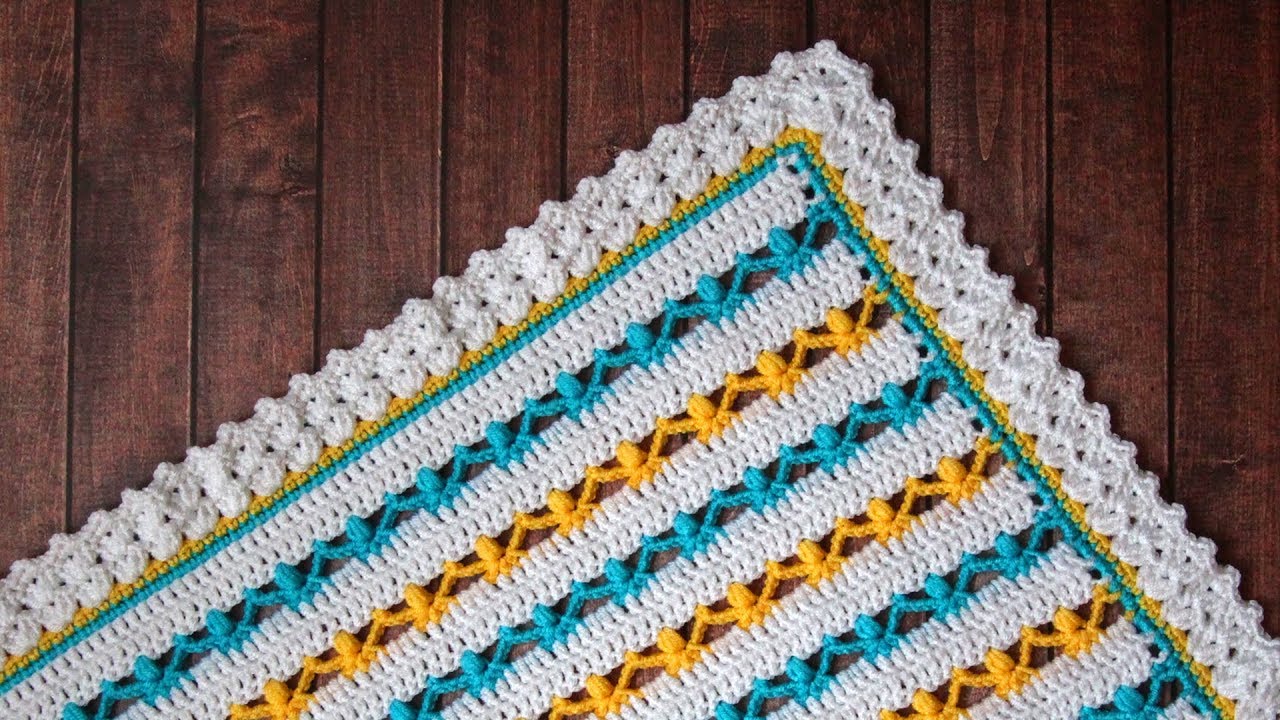
The plaid from the so-called "grandmother's squares" looks very nice. You can choose a pastel scale and combine 3-4 shades, or you can use this idea in order to "clean up" the deposits of yarn residues that every knitter has. Leftover bedspreads are usually very effective.

A little life hack: if you decide to knit a blanket from the rest of the yarn, but notice that dark colors and shades dominate in your stocks, just buy a couple of skeins of bright threads, then the result will be more positive.
Advice. By the way, according to the principle of grandmother's square, you can also knit a whole canvas. Then the stripes will be multi-colored, and not fragments inside the blanket.
Stripes and waves
This is another kind of patterns that are often found when creating blankets for children. At the same time, the striped pattern may well be one-color, but, of course, the combination of several different shades looks much more interesting.
Here is a description of the basic crochet wavy pattern:
- Cast on 187 stitches, then cast on 3 more lifting stitches for the second row.
- * Tie 6 double crochets in a row in each stitch.
- Leave the seventh column on the hook untied to the end, and in the same way leave the eighth and ninth columns in order to knit them together with one vertex.
- Next, we again knit 6 columns with one crochet in the next 6 stitches, and in the seventh loop we knit three columns with one crochet at once (that is, we get three columns with one base). #
- To the end of the row, repeat from * to #.
- The colors can be changed in each row, or in two or three rows. The colored stripes do not have to be the same.
Often the color scheme is selected depending on the gender of the child.So, for example, a wavy pattern for a boy is done in blue colors (blue, blue, white), and for a girl in pink shades (pink, white, pale purple or lilac).
According to the shawl pattern
Today, a huge number of patterns for shawls and scarves are available. Many of them are quite suitable for a crocheted summer blanket. The product can be knitted in circular rows (but this does not mean at all that the plaid will turn out to be round!), And can be connected from an angle to an angle.
In general, choose the option that you like and can handle.
Blanket for discharge from the hospital
Discharge from the hospital is a significant event in the life of every family, and very often mothers try to make the baby look his best at this moment! Therefore, it is not uncommon for a blanket to be purchased or knitted exclusively for this event. Most often these are snow-white airy bedspreads, more reminiscent of lace.
If we are talking about warm models, then preference is given to either woolen or fur options.
Plaid finishing
The peculiarity of crocheted products is that very often a knitted fabric does not mean a finished product. Most models require a border. In some cases, it is enough to tie the bedspread with several double crochets, and for some, a wide openwork border is required.
Again, choose diagrams and descriptions that you personally enjoy. There are no hard and fast rules.

Some mothers, in addition to the border, decorate blankets with appliqués and other decorative elements. The main thing to remember is that the bedspread should be comfortable and safe for the baby, and everything else is your imagination.

Pompons or brushes around the perimeter look beautiful. Especially if the plaid itself is made in a very restrained manner.

So, crocheting a blanket is not the most difficult task. The main thing is not to get lost in the wide range of offered models and schemes. By choosing high-quality yarn and convenient tools, you will definitely be able to create a unique blanket that will keep your baby warm.
Video: how to crochet a blanket for a baby




